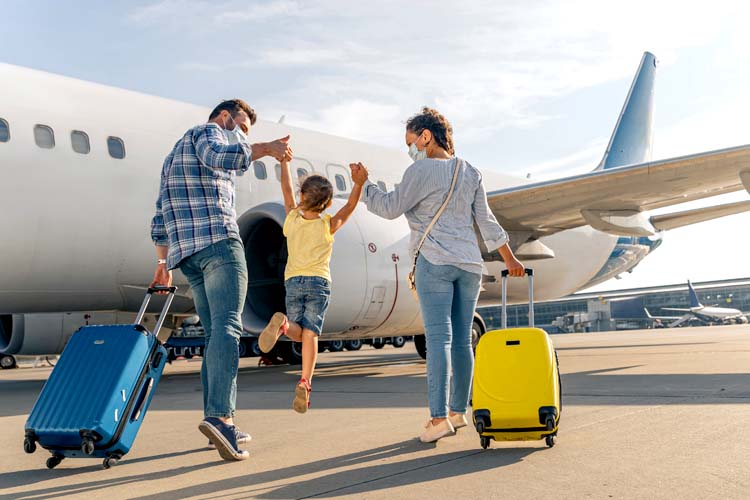What is the future of air travel after the COVID pandemic. Learn more about “Managing Changes and Innovations in a Post-Pandemic World.”
Due to the global COVID-19 pandemic, travel limitations, safety precautions, and economic depression, the aviation industry has experienced tremendous upheaval in recent years.
As the epidemic progressively fades from the world’s consciousness, air transport is at a turning point in its history, one that will require innovation, adaptability, and unpredictability.
We dive into the changing face of air travel in this in-depth analysis, looking at the innovations, problems, and shifts that the sector is facing in the wake of the pandemic.
Consult a professional today
Learn more about “Managing Changes and Innovations in a Post-Pandemic World.”
Managing Changes and Innovations in a Post-Pandemic World
Improved Safety and Health Measures
- Airlines and airports have put in place a number of health and safety procedures in reaction to the COVID-19 epidemic in order to safeguard employees and passengers. These precautions include stricter rules about social distancing, mask wearers being required, improved cleaning and sanitation protocols, and contactless check-in and boarding procedures.
- The airline industry is probably going to keep putting health and safety precautions at the top of its priority list in order to reassure passengers and boost confidence in air travel as long as infectious disease threats persist. To enable smooth and safe travel experiences, this may entail further investments in hygienic technologies, enhanced air filtration systems, and digital health passports. Learn more about “Managing Changes and Innovations in a Post-Pandemic World.”
Initiatives for Sustainable Aviation
- There is increasing pressure on the aviation sector to manage its environmental impact and cut carbon emissions in accordance with international climate goals. As a result, airlines are supporting sustainable aviation projects more and more. Examples include buying fuel-efficient aircraft, switching to alternative fuels, and putting carbon offset plans in place.
- In order to make substantial progress toward decarbonization, the aviation sector must make large expenditures in research, technology, and infrastructure, which poses both a challenge and an opportunity. Sustainable aviation efforts, however, also offer chances for creativity, teamwork, and leadership in tackling one of the most important issues of our day.
Learn more about “Managing Changes and Innovations in a Post-Pandemic World.”
Innovation and Digital Transformation
- The desire for more effective and seamless travel experiences, along with shifting consumer expectations and technological advancements, are driving the digital transformation of air travel at an accelerated pace. Airlines and airports are using digital technologies to improve customer service, streamline operations, and customize the travel experience. These technologies range from mobile check-in and biometric verification to artificial intelligence and predictive analytics.
- Digital technology integration has the power to completely transform the airline industry, from reservation and ticketing to baggage claim and in-flight entertainment. Travelers may anticipate increased convenience, efficiency, and customisation in their journey from point of departure to point of arrival as the sector adopts digital innovation.
Redesigning the Journey for Passengers
- The epidemic has altered the traveler experience, forcing airports and airlines to reconsider established procedures and place a higher value on adaptability, durability, and customer-centricity. This entails redesigning airport terminals to reduce traffic, rethinking cabin layouts to allow for social separation, and providing flexible booking processes to allow for last-minute changes in travel arrangements.
- Airlines and airports are focused on providing a secure, comfortable, and enjoyable travel experience that matches the changing demands and expectations of travelers as travel restrictions loosen and passenger demand rises. To stand out in a crowded market, this could entail making investments in upscale facilities, improving digital services, and giving sustainability and wellness programs first priority.
Connectivity and Regionalization
- Travelers are choosing shorter, domestic or regional flights over lengthy, international itineraries, which has exacerbated the trend towards regionalization in air transport. This change is a result of both persistent travel restrictions and border closures that have reduced options for foreign travel, as well as shifting consumer tastes.
- Regional and domestic travel will probably continue to be a top priority for airlines and airports looking to repair their networks and take advantage of pent-up demand, even though international traffic is predicted to gradually recover as borders reopen and trust grows. To enable passengers to move seamlessly, this may entail extending routes, raising frequency, and improving connectivity between regional hubs.
As the aviation sector navigates the difficulties and transformations brought about by the COVID-19 epidemic and beyond, the future of air travel is characterized by unpredictability, innovation, and opportunity. The aviation sector is undergoing a dramatic shift that will impact how we travel for years to come. This transformation includes improved health and safety measures, sustainable aviation efforts, digital transformation, and redesigning the passenger experience.
In order to ensure a secure, seamless, and sustainable future for air travel in a post-pandemic world, airlines and airports must embrace innovation, teamwork, and sustainability in order to adapt to the changing demands and expectations of travelers.
Learn more about “Managing Changes and Innovations in a Post-Pandemic World.”
